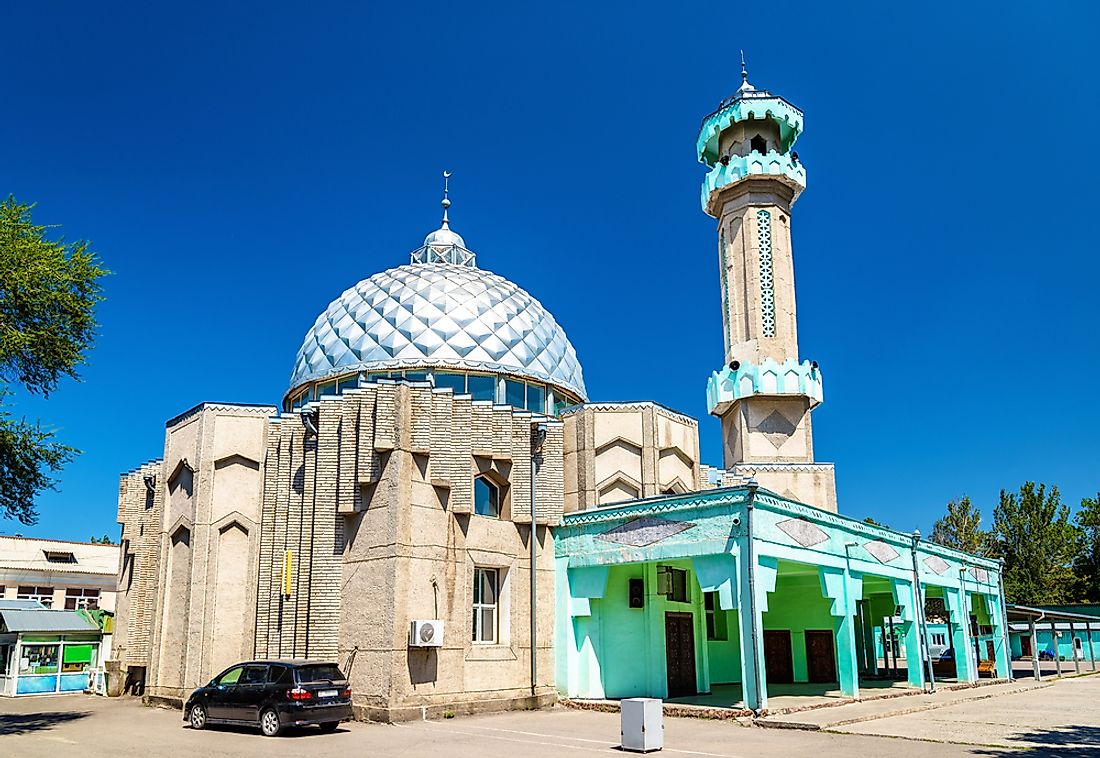Religious Beliefs In Kyrgyzstan

Kyrgyzstan is a sovereign nation located in Central Asia. The landlocked country encompasses an area of 199,951 square km. The population of the nation is 6,019,480. Muslims account for 75% of the population of Kyrgyzstan. Russian Orthodox Christians and followers of other religions account for 20% and 5% of the country’s population, respectively.
The Largest Religion In Kyrgyzstan
Most of the Muslims living in Kyrgyzstan are Sunni Muslims. Sunni Islam was introduced in the nation at about the 8th century. By the end of the 19th century, Islam had become the dominant religion in Kyrgyzstan. The Islam practiced in the country is often infused with the elements of the pre-Islamic traditions and customs of the ethnic Kyrgyz people.
Christianity In Kyrgyzstan
Christianity, the second largest religion practiced in Kyrgyzstan has a long history in the country. Archeological remains indicate that a Christian church existed in the country as far back as the 7th century. Eastern Orthodox Christianity has the highest number of adherents among the churches active in the country. About 700,000 to 1.1 million people of the nation are affiliated with the Eastern Orthodox Church. Most of the country’s Christians are ethnic Ukrainians or Russians. The Roman Catholics living in the country number only about 1,500.
Indigenous Religions In Kyrgyzstan
Tengriism refers to the traditional religious beliefs of the ethnic Kyrgyz. It is a religion practiced in Central Asia with animism, shamanism, totemism, etc., being an integral part of the religion. Believers in this religion in Kyrgyzstan worship the spirits of nature and their ancestors. They also recognize spiritual kinship with a particular animal type and adopt animals like camels, snakes, reindeer, owls, etc., for worship. Traditional religious practices play a greater role in the lives of the Kyrgyz people in the northern parts of the country than in the south.
Religious Freedom And Tolerance In Kyrgyzstan
The state atheism policy of the Soviet Union had little impact on the religious life of the people in Kyrgyzstan during the Soviet rule. Following independence, the country continued to remain secular. In general, the society in northern Kyrgyzstan is more secular while that in the south is more religious. Since the past few decades, the share of the Muslim population has been increasing in the country. This increase has been accompanied by a rise in the number of public figures who have demanded the promotion of traditional Islamic values in the nation. Like in other parts of Central Asia, such deviation from a secular outlook has raised a concern about the possibility of a fundamentalist Islamic revolution. As of now, the Kyrgyz government is withholding the constitutional rights of the people by ensuring that the secular nature of the Kyrgyz society remains stable.
Religions in Kyrgyzstan Population Breakdown
| Rank | Religion | Population Percentage (%) |
|---|---|---|
| 1 | Islam | 75 |
| 2 | Orthodox Christianity | 20 |
| 3 | Other | 5 |











